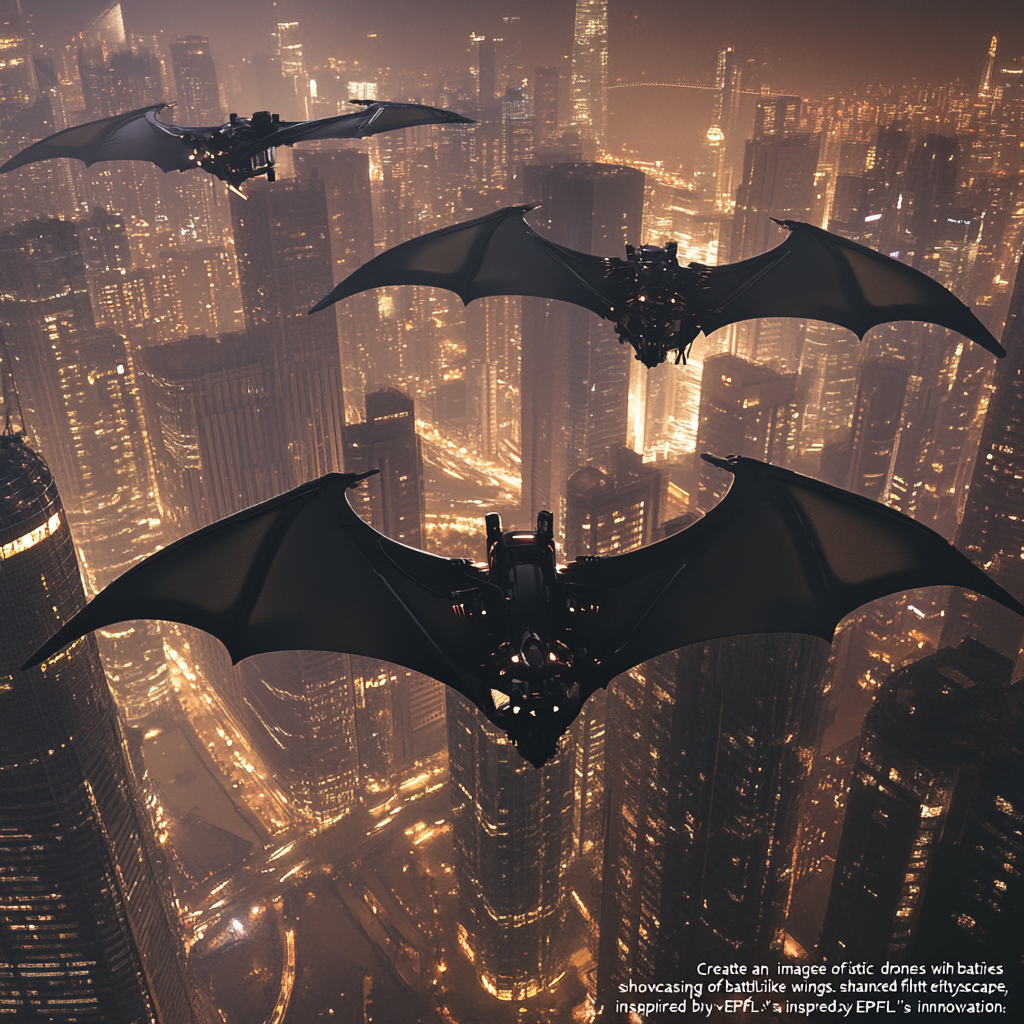
Aerial Flight Enhanced by Innovative Bat-inspired Wing Design for Improved Hovering and Performance
In the grand game of flight—where physics meets nature—an exciting new chapter has been written, courtesy of some ingenious engineers over at the Ecole Polytechnique Fédérale de Lausanne (EPFL). Picture this: batlike wings that not only boost hovering efficiency but also make flight performance soar. These marvels of design could turn the drone world upside down and send the concept of energy harvesting into overdrive.
First, let’s chat about a fascinating tale from the annals of science. Back in 1934, a bold French entomologist named Antoine Magnan famously proclaimed that bumblebees, with their pint-sized wings, were never meant to take to the skies. The poor guy was convinced that their tiny appendages lacked the lift to defy gravity—ah, the audacity! Fast forward to today, and thanks to our shiny high-speed cameras, we’ve uncovered their little secrets. Enter the leading-edge vortex! This aerodynamic phenomenon is a fancy term for when the air wrapping around the front of flapping wings spirals into a vortex, creating a sweet low-pressure zone that generously boosts lift. Who needs a physics degree when nature drops such gizmos right in our laps?
Now, bats—the true rockstars of flight. These critters don’t rely on the leading-edge vortex for their aerial acrobatics. Instead, they splash around in a world of flexible membrane wings that allow them to dance through the air with stunning efficiency. In fact, some bats burn up to 40% less energy compared to moths of the same size. Talk about a fitness regimen!
So, let’s take a peek into that innovative lab at EPFL where the magic happens. The rascals at the Unsteady Flow Diagnostics Laboratory decided to experiment with these flexible wings to see just how far they could push the limits of aerodynamics. They crafted a sinewy membrane from a silicone-based polymer and affixed it to a framework equipped with surfaces that rotate. The whole setup was dunked into a bath of water sprinkled with polystyrene tracer bits to visualize the water’s flow as it whisked past the wings. Cue the dramatic music, folks!
One spotlight moment from this exploration is the revelation that the wings are not doling out lift the typical way—no leading-edge vortex shenanigans here! Instead, it’s all about the sleek curvature of the membrane. Alexander Gehrke, once an eager EPFL student and now a savvy researcher at Brown University, laid it out: “The wing has to be curved, but it has to be curved by just the right amount. Too much flexibility? You’re heading backwards!”
Here’s the math of it:
- Smooth Air Flow: This isn’t your standard rigid wing affair; air glides gently over the curves, crafting a luscious lift without launching into wild vortex formation.
- Efficiency: If you're about saving energy (and who isn't?), these wings win any beauty contest in performance. They’re just plain better than those stiff counterparts.
- Adaptability: The insights gleaned from this research could potentially revolutionize how we design drones, wind turbines, and energy harvesters, driving them all toward peak efficiency. Imagine a world where your energy-producing devices flex their muscles instead of holding back!
Now, let’s dream a little—what could all this mean?
-
Drones: As drone tech races toward compact design, they’ll need to wrestle with the ever-present challenge of aerodynamic shifts. With the help of flapping motions inspired by feathery friends, we might just see drones capable of heavy-lifting while defying the elements more gracefully than ever before.
-
Energy Harvesters: Think about the machines we already have in play, like wind turbines. They could seriously level up, taking cues from these studies to become more efficient at harnessing nature’s breezes and even sucking up energy from ocean currents. With advancements in sensors, control tech, and some nifty AI, we could see these wings adapting their performance effortlessly as conditions change. Wind be gone, we’ve got this!
But hold your horses! While these batlike wings have strut their stuff, don’t forget about the traditional birds in our engineering sky. Existing helicopter designs can still bank on some of the same aerodynamic magic. NASA has had its moments demonstrating that tweaking airfoil sections can boost hovering efficiency by a staggering 7%. Pretty neat considering it’s all about precision!
And then, of course, there's the nitty-gritty of flight testing new aerial vehicles. This process isn't for the faint-hearted. It involves testing in controlled environments, careful step-by-step progressions, and deciphering how these nifty machines make decisions. It’s like watching a toddler learn to walk, only with more complex algorithms and churning propellers.
So, we stand on the precipice of a thrilling new era in aerodynamics, one that's as much about creativity as it is about understanding nature’s underlying principles. The applications of batlike wings could ripple outwards, not just for drones but for all sorts of aerial vehicle designs, alongside our trusty energy harvesters. Who knows? With continued innovation, flight will become not just more efficient but might just transform our day-to-day lives.
Want to stay up to date with the latest news on aerodynamic innovations and their applications? Subscribe to our Telegram channel: @channel_neirotoken.

